Exposed on a rocky outcrop, with the raging Atlantic Sea below and the wide-open Cornish sky above, the very elements which make Tintagel a special place to visit have reduced it to a crumbling, romantic ruin.
Despite its ruinous state, the castle sees nearly a quarter of a million visitors a year, attracted in part by its associations with King Arthur, the legendary king of the Britons.
Find out more about Tintagel Castle – including things to do at the site, ticket prices and the history of the castle – with our visitor's guide.
Looking for more outdoor inspiration? Check out our guides to the best walks in Cornwall, Roman Britain and great coastal trails.
Castles of Britain
Britain's ancient castles are woven into the rich heritage of our cities and countryside. Explore remote medieval ruins and iconic castles with our guide to the best castles to visit in Britain.
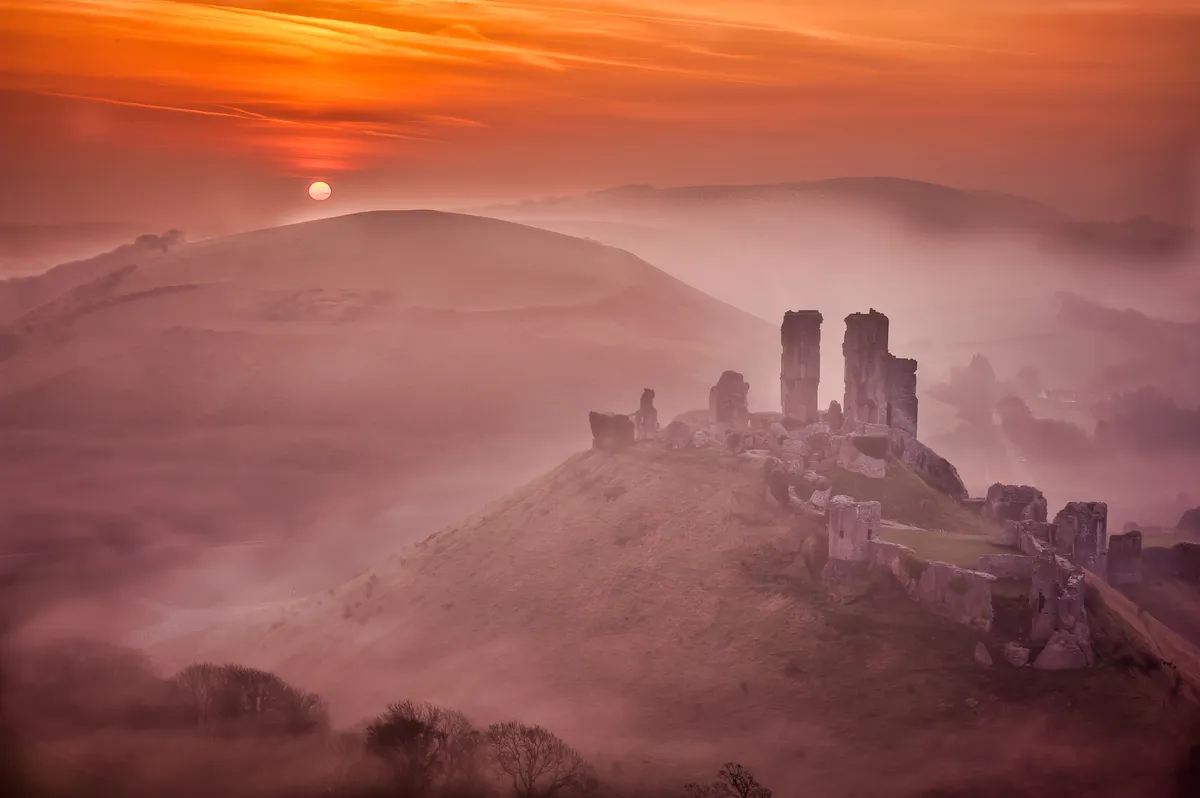
Things to do at Tintagel
Tintagel Castle
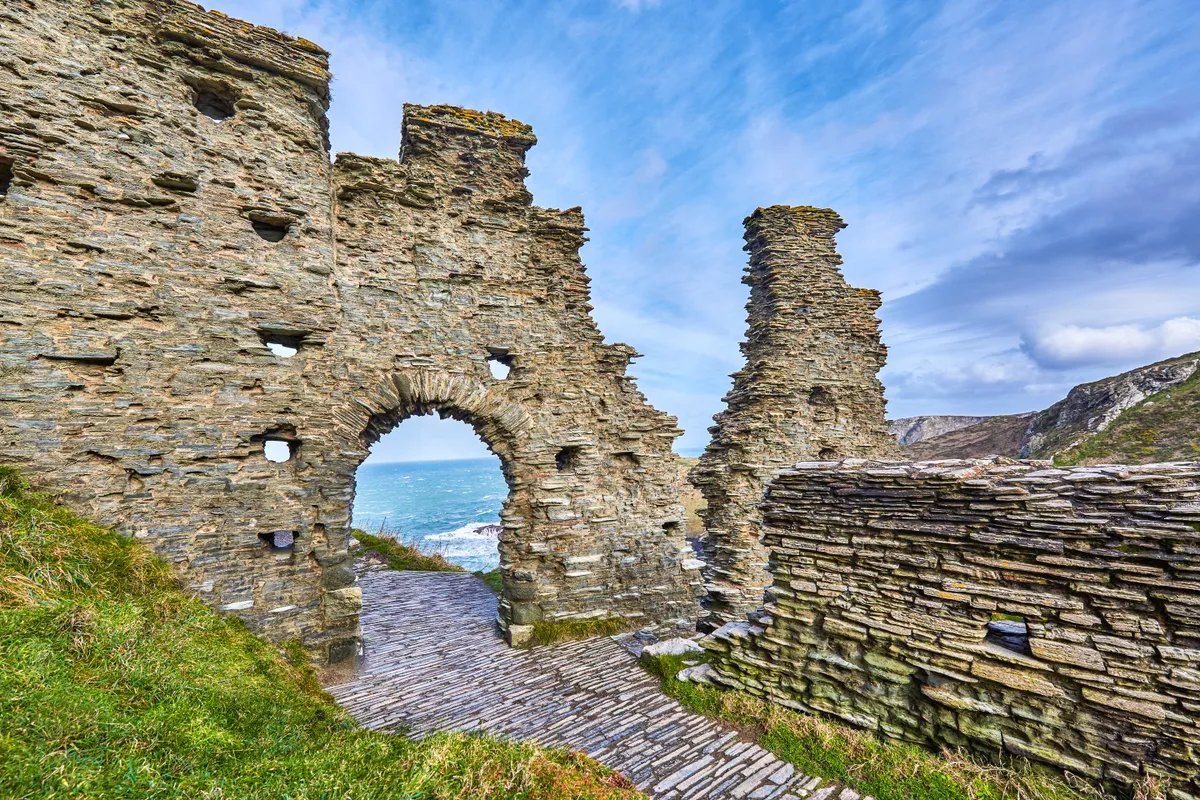
Once you’ve successfully navigated Tintagel Bridge, you can explore the remains of Tintagel Castle, including the Great Hall, which was once the centre of Richard, Earl of Cornwall’s court in the 13th century.
The site’s history extends even further back, as highlighted by footprints of 5th and 7th-century dwellings. There is also the beach cafe, serving local dishes such as Cornish rarebit.
The nearby village is a bustling hub of gift shops, cafes and pubs and the site itself has two cafes and a gift shop.
Tintagel Bridge
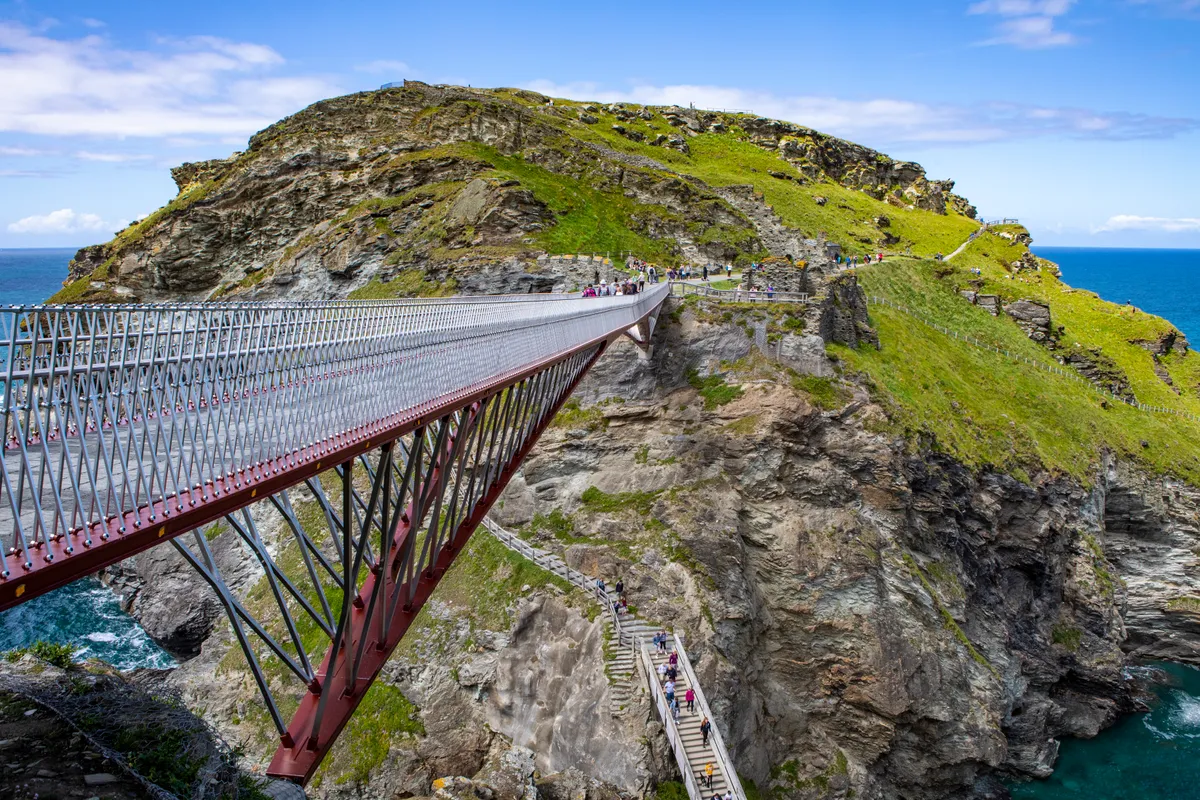
Today visitors can cross the impressive new 68.5m bridge spanning the gorge over to Tintagel Island to visit the ruin and the caves below, which are said to be the former home of the legendary wizard Merlin.
In 2015, English Heritage launched a competition to design this new crossing. The winning entry is a collaboration between Belgian architect Laurent Ney and William Matthews Associates, the lead designers of London’s Shard. Their design features local Cornish Delabole slate paving, with two separate cantilevers reaching out and almost – but not quite – meeting in the middle. The bridge’s central 4cm gap is a representation of the transition from the mainland to the island, present to past, reality to legend.
Merlin’s Cave
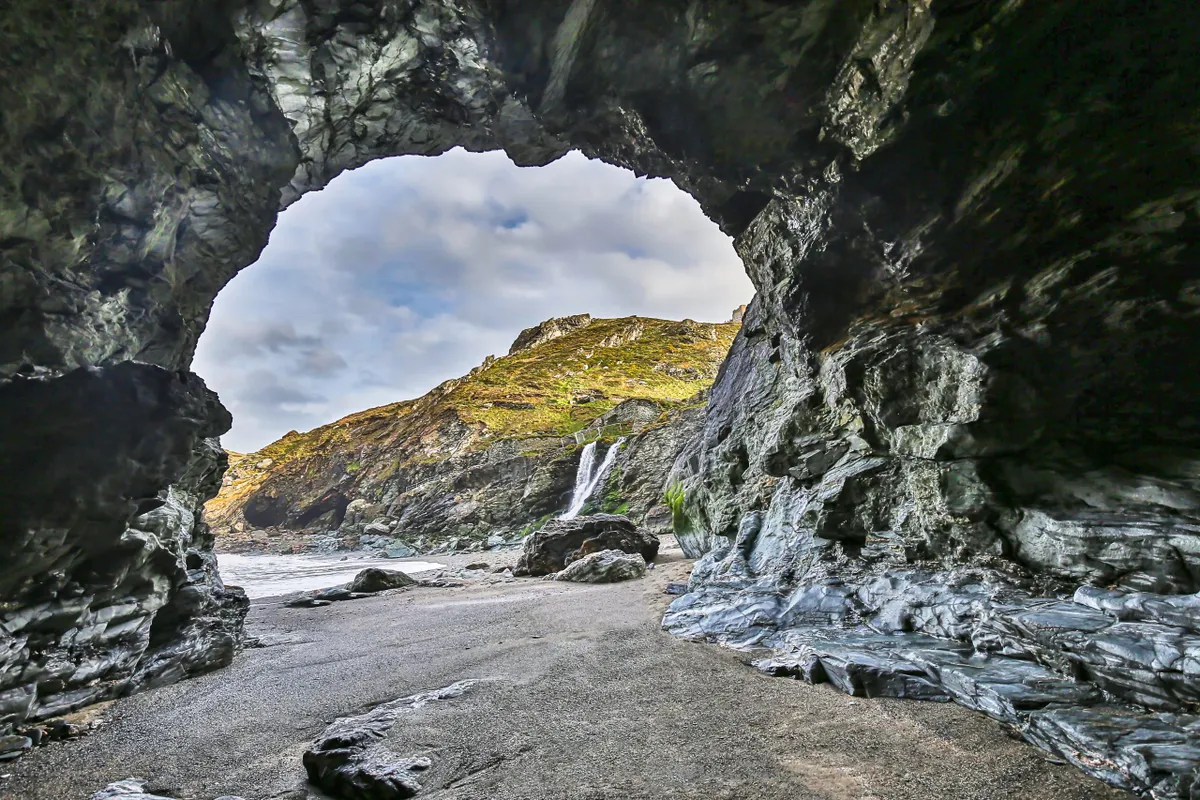
Be sure to visit the beach below Tintagel Castle and explore Merlin’s Cave at low tide. The cave is 100 metres long and runs beneath Tintagel Island.
St Nectan’s Glen
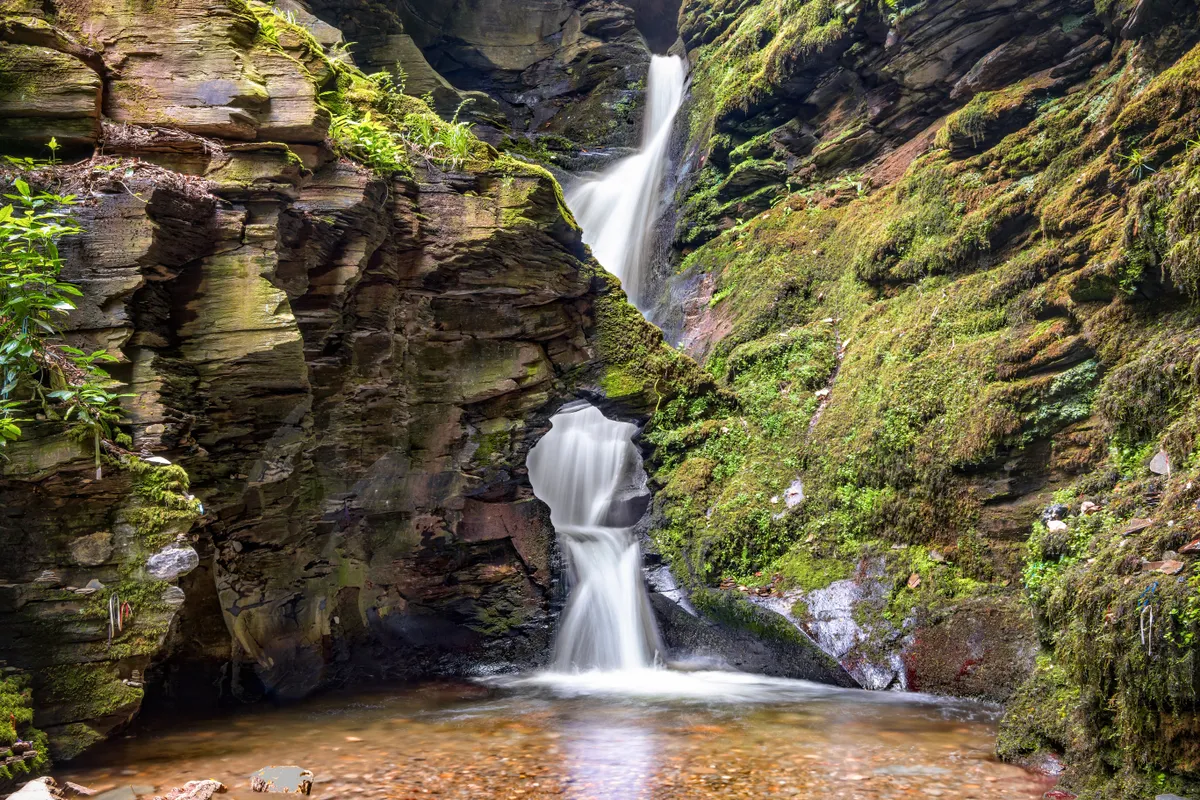
Those wishing to continue the Arthurian adventure should seek out nearby St Nectan’s Glen and its spectacular waterfalls, Slaughterbridge and Camelford, or just soak up the uniquely mystical atmosphere of Tintagel village centre itself. Tickets to see the waterfall itself are £8 per adult and £4 per child, which may come as a shock for those who last visited before 2012.
Tintagel Castle history
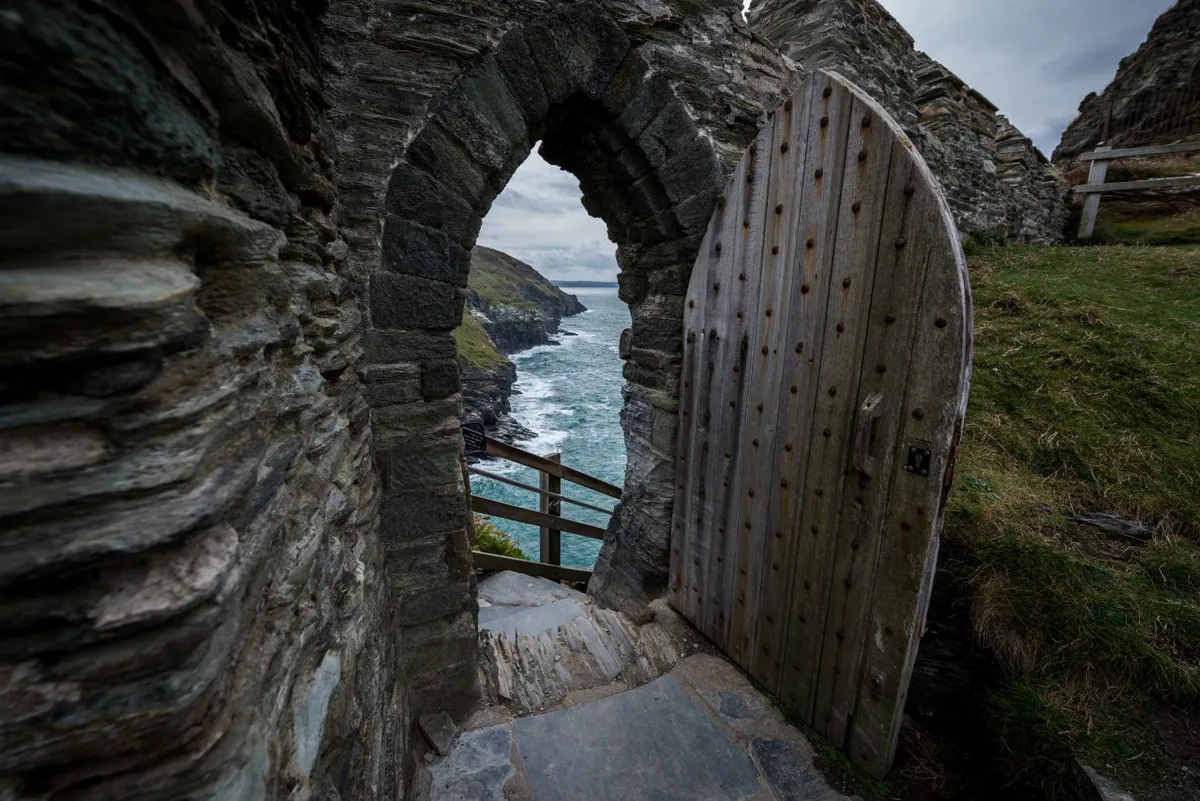
Geoffrey of Monmouth, a 12th-century cleric, first cited Tintagel as the birthplace of Arthur in his book The History of the Kings of Britain, but historians have yet to confirm the story. Recent archaeological evidence even suggests that the real Arthur may have lived 200km to the north-east in the border town of Shrewsbury.
Centuries before Geoffrey’s time, between the 5th and 7th century AD, Tintagel was a boom town for Cornish tin. Goods from all over the Roman Empire found their way here and to get an idea of the scale of this ancient trading hub, more fragments of amphora, Roman vessels for wine and oil, have been found in and around Tintagel than in all of Britain combined.
Tintagel has long been considered a sacred site in Arthurian lore as the rumoured birthplace of King Arthur, as named by Geoffrey of Monmouth in his 12th-century tome Historia Regum Britanniae. This ancient association is the reason Richard of Cornwall chose the spot for his own castle in 1233. A suitably spectral sculpture of the legendary king greets castle guests.
Tintagel Castle tickets
In an effort to preserve the castle’s archaeology and ecology, English Heritage has introduced timed tickets, which need to be booked in advance.
Tintagel Castle is open daily. Adult entry £16.30.

